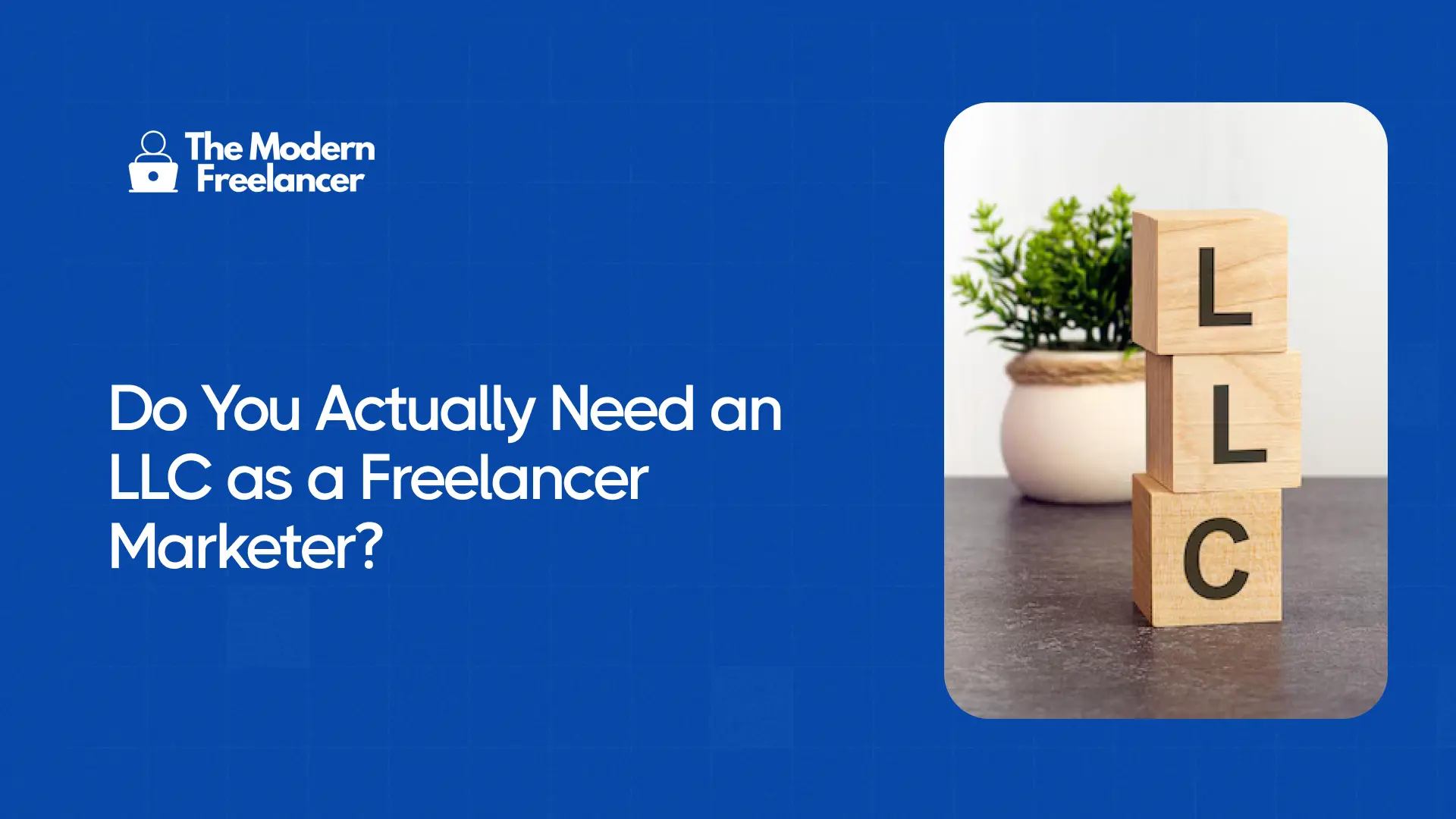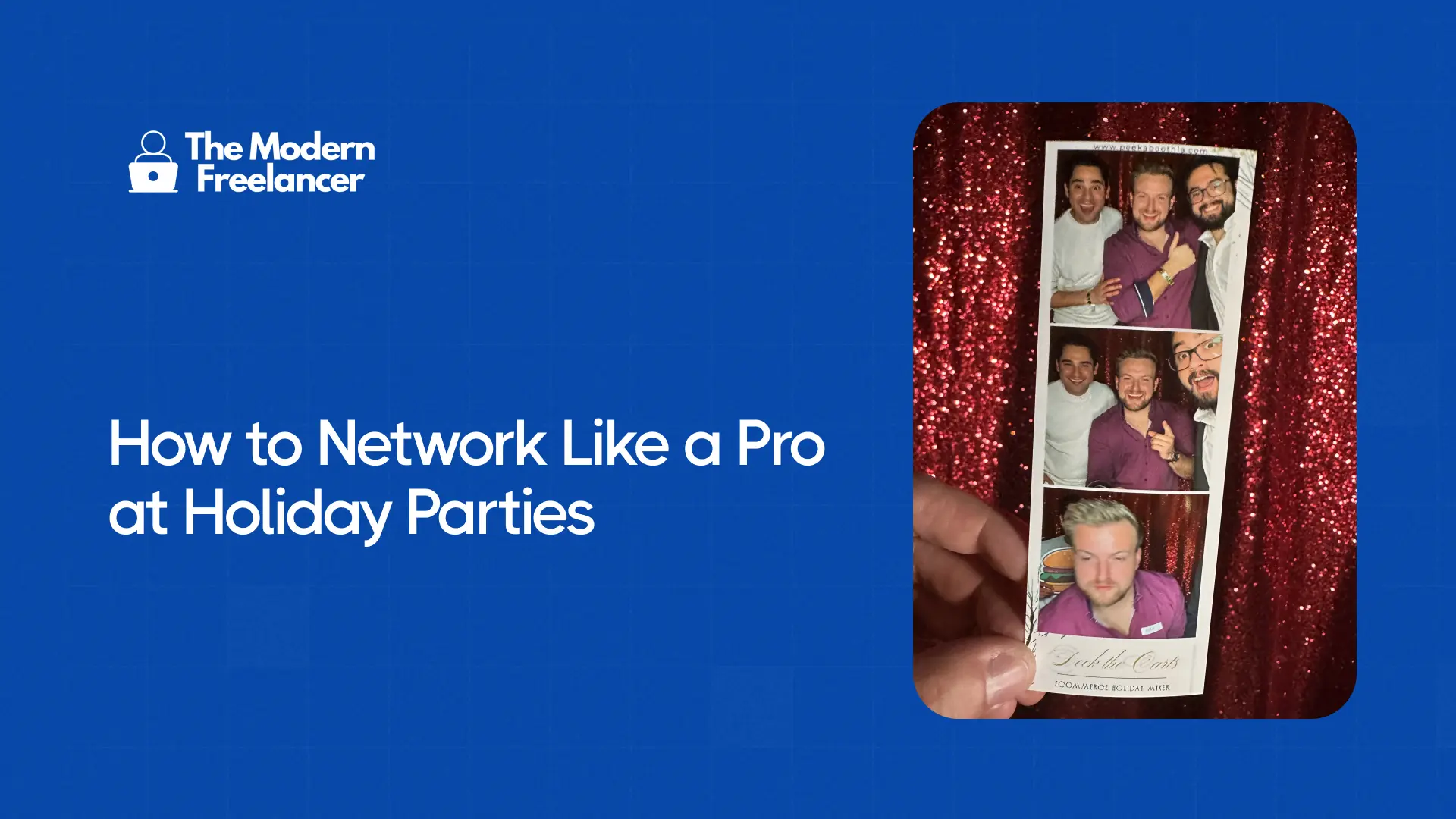5 Best Freelance Websites And How to Make Them Work for You
Discover the best freelance platforms of 2026 and learn how to leverage them effectively, whether you're a beginner or seasoned pro.

Heads up: Some of the links below are affiliate links, which means I may earn a small commission if you choose to use them — at no extra cost to you. I only recommend tools I personally use and trust.
"Should I even bother with freelance platforms?"
If you're a freelance marketer, you've probably asked yourself this question. With all the horror stories about race-to-the-bottom pricing and endless competition, it's tempting to write off platforms like Upwork and Fiverr completely.
But here's what most people don't realize: Some of the highest-paid freelancers I know still use these platforms to find premium clients. Many make $10,000+ monthly from platform-sourced clients alone.
I’ve personally hired freelancers on Fiverr and Upwork consistently for years now, and I’m always surprised to see how few US-based senior freelancers there are for categories like Facebook and Google Ads. My guess is a lot of them get their clients via word of mouth and don’t even need these platforms anymore, but if you’re still building your network, there goes your opportunity to capitalize on those platforms!
But of course, you need to know how to use these platforms strategically.
I’ll show you how to do that in just a minute. But first, I want to be upfront about the pros & cons of these platforms.
The Truth About Freelance Platforms
Platforms like Upwork and Fiverr are essentially marketplaces. Just like any marketplace, you'll find both bargain hunters and premium buyers.
Your job isn't to compete with everyone – it's to position yourself to attract the right clients.
Here are the pros and cons you need to know:
The Pros
Built-in Payment Protection
Most platforms hold client payments in escrow before releasing them to you. This means no more chasing payments or dealing with clients who disappear – you're guaranteed to get paid for completed work.
Constant Flow of New Clients
New projects are posted every few minutes across these platforms. Instead of spending hours on cold outreach, you can simply browse through a list of pre-qualified clients actively looking to hire.
Easy Access to High-Level Clients
Major companies like regularly hire through these platforms. This gives you access to enterprise clients you might never reach through cold outreach – and they often pay premium rates.
Perfect for Beginners to Gain Experience
You can start landing clients without an extensive portfolio or years of experience. The platform's reputation system lets you build credibility quickly through reviews and completed projects, making it easier to land bigger clients later.
The Cons
Platform Fees (Usually 5-20%)
These fees can take a significant bite out of your earnings, especially when you're just starting. For example, on a $1,000 project, you might lose $200 to platform fees – though this typically reduces as you build longer relationships with clients.
High Competition for Projects
It's not uncommon to see 50+ proposals on a single job within hours of posting. Many freelancers simply copy-paste generic proposals, creating noise you'll need to cut through with thoughtful, personalized responses.
Need to Build Platform-Specific Reputation
Your impressive LinkedIn profile or portfolio website won't help much here. Each platform requires you to build your reputation from scratch through reviews and completed projects – which can take months of consistent effort.
Can Be Time-Consuming to Find Good Projects
You'll often need to wade through dozens of low-quality opportunities to find the gems. Many freelancers spend hours daily just searching and applying for projects, with no guarantee of landing the work.
Despite the cons, thousands of freelancers make six figures using clients found on these platforms alone.
If you decide to give these platforms a shot, the first decision you’ll have to make is which platforms to join.
Let's look at the four biggest platforms and what makes each one unique for freelance marketers:
5 Best Freelance Websites You Need To Know
In the world of freelance marketing, some platforms stand out more than others. These are the best freelance platform options you should consider, depending on your skill set and goals. There’s something for everyone.
Upwork
Upwork is like the LinkedIn of freelance platforms. It's where serious businesses go to find long-term marketing partners. While it's harder to get accepted as a new marketer now, once you're in, you can command premium rates. I regularly see marketing freelancers landing $2,000-5,000 monthly retainers here.
To succeed, develop a clear Upwork strategy — position yourself as a niche expert, craft value-driven proposals, and focus on long-term relationships instead of one-off gigs.
Pros:
- Access to top companies willing to pay premium rates for quality work.
- Many jobs here lead to ongoing relationships and long-term contracts.
- Upwork’s rating system helps you build a reputation with each completed project.
Cons:
- It's harder to get started compared to platforms like Fiverr or Freelancer.com.
- Upwork charges a fee that decreases as you build longer-term relationships with clients.
Fiverr
Fiverr is also among the best freelance platform variants, but it works differently – instead of applying for jobs, you create specific marketing packages that clients can purchase. This makes it perfect for specialized services like writing sales emails or creating social media content. While you might start with lower-priced packages, many successful marketers use it to sell high-ticket marketing audits and strategy sessions.
Pros:
- It's easy to create a profile and start selling services immediately.
- You can create specific services that match your skill set and interests.
- You can easily increase your rates once you've built a reputation on the platform.
Cons:
- You may need to start with lower-priced gigs to build your portfolio and reputation.
Betterly
Betterly is the elite club where projects often start at $5,000+. They only accept about 1% of applicants, but if you’re a true rockstar, it can connect you with funded startups and Fortune 500 companies. Full disclosure, I own this one :)
Pros:
- High-Paying Clients: Projects are typically high-paying, so it’s ideal for experienced marketers.
- Limited access guarantees you're working with the best of the best in the industry.
Cons:
- Competitive to get in.
Freelancer.com
Freelancer.com is the best freelance platform for building your portfolio quickly. Rates tend to be lower, but it's easier to get started here compared to other platforms.
Pros:
- It’s easier to land your first few clients.
- There are a variety of projects across different marketing niches.
- You can offer competitive rates to attract clients initially.
Cons:
- The rates tend to be lower compared to other platforms, especially when you're starting out.
- Like many other platforms, you'll compete against many freelancers for the same jobs.
Guru
Guru is another great platform for freelancers, especially those in creative or technical fields. It can bring you project-based or recurring work with clients from different industries.
Pros:
- Guru attracts clients from a broad range of industries, so you get more chances of landing varied work.
- You can choose between hourly, milestone, or fixed-price contracts.
- You can easily manage multiple projects with a workroom for each.
Cons:
- It’s not as well-known as Upwork or Fiverr, so fewer opportunities might be posted.
- If you want more features, you may have to upgrade to a paid plan.
Now, once you’ve picked the right platform for you, let’s talk about…
How to Actually Win on These Platforms
The 4 things you need to keep in mind are:
- Position yourself as a specialist, not a generalist. Instead of saying "I do digital marketing," specify something like "I help SaaS companies increase trial conversions through email marketing." Back this up with real results: "Generated 127% more trials through automated email sequences for 3 B2B software companies."
- Your proposals need to show you've done your homework. Most marketers fail because they talk about themselves instead of the client's problem. If a client needs help with Facebook ads, mention specific issues you've noticed in their current campaigns and outline your approach to fixing them.
- For pricing, compete on value, not cost. Research what others charge for similar services, then position yourself slightly above average. If most Facebook ad managers charge $1,000/month, start at $1,200 but offer a more comprehensive package including weekly reporting and strategy calls.
- Create templates for everything. Including project briefs, onboarding documents, reporting frameworks. This not only saves time but also makes you appear more professional. Set up systems to follow up with past clients and ask for reviews at the right time.
Best Freelance Websites for Beginners
If you're just getting started as a freelancer, the key is to find platforms that allow you to build your portfolio and organically enter the competition. Some platforms offer a lower barrier to entry. Here are some of the best freelance websites for newcomers:
- Fiverr. With Fiverr, you can quickly launch and start offering specific services. It’s a great way to build a reputation and start earning. There’s no requirement for lots of experience as well.
- Freelancer.com. The pay here might not be as high initially. However, Freelancer.com helps you build your portfolio and gain exposure in a variety of niches.
Your Action Step
Choose ONE freelance website that matches your goals. Spend 2 hours optimizing your profile using the guidelines above and submit 5 highly personalized proposals to relevant projects. Track your response rate and adjust accordingly.
You see, success on freelance platforms isn't about racing to the bottom or competing with hundreds of other marketers. The real winners are those who take the time to position themselves strategically, showcase their expertise, and focus on delivering exceptional value.
I've seen too many talented marketers give up on platforms too soon, missing out on what could be a consistent source of high-paying clients.
So start with the action steps I've outlined above. Focus on one platform, perfect your approach, and give it at least 30 days of consistent effort. The clients – and income – will follow.
Best Freelance Websites FAQ
Which is the best freelancing website?
The "best" freelancing website depends on your goals and skill level. For long-term relationships and premium clients, Upwork is ideal. For specialized services and niche offerings, Fiverr might be better. If you're looking for high-paying projects and exclusivity, Betterly is a top choice.
Is Fiverr better or Upwork?
It depends on your service model. Fiverr might be better if you offer specialized services. If you want long-term contracts, Upwork is more suited for you.
What website is better than Fiverr?
Fiverr is great for beginners and niche gigs. At the same time, Upwork gives more long-term opportunities and the potential for higher-paying clients. Betterly also stands out for its premium projects.
Which website is best for a beginner freelancer?
Fiverr and Freelancer.com are both excellent platforms for beginners. They allow you to start small and build your reputation, gaining valuable experience along your way.
Which freelance website pays the highest?
Betterly offers the highest-paying projects (many starting at $5,000 and going up from there). Upwork also has a reputation for higher-paying, long-term contracts.



